Fiat G.50B Bicomando
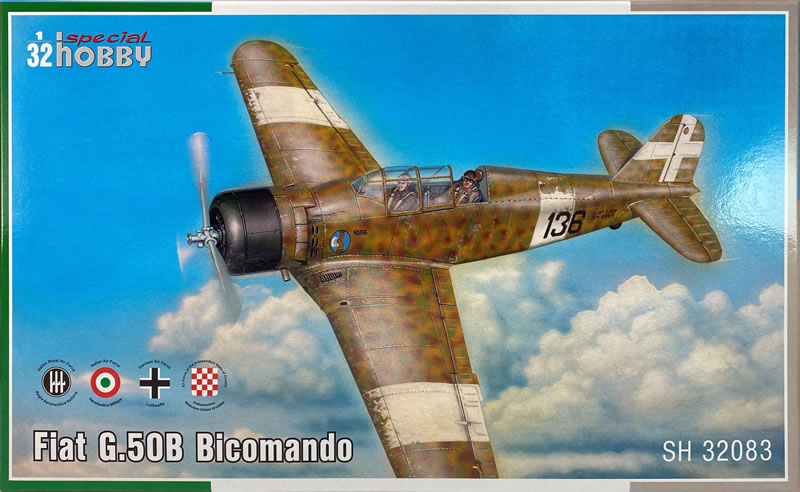
Special Hobby, 1/32 scale
S
u m m a r y : |
Description and Item No.: |
Special Hobby Kit No. 32083 - Fiat G.50B Bicomando |
Contents and Media: |
Plastic, resin and photo-etched parts; decals for two marking option; instructions. |
Price: |
£43.80 EU Price (£36.50 Export Price) plus shipping available online from Hannants
€48,60 plus shipping available online from Special Hobby's website |
Scale: |
1/32 |
Review Type: |
First Look |
Advantages: |
Unusual subject; high level of detail; nice recessed surface textures; high quality decals. |
Disadvantages: |
Limited run nature of the kit will require some previous experience. |
Conclusion: |
This is a limited run kit so its not for beginners but with patience, work and skill a very nice looking model can be achieved. In fact, having build the early Special Hobby back in the 1990s, this one looks like almost a “Tamigawa” comparing to them.
It`s quite an unusual subject in 1:32, but a very welcome one after the single seater and Special Hobby has done a very good job with this one!
Highly Recommended. |
Reviewed by Francisco Guedes

The Fiat G.50 B version with the longer cockpit design for the instructor and the student.
As the G.50 was entering production and the first operational units were formed, a trainer was needed for new pilots. As most army pilots were accustomed to flying older biplanes, retraining them for flying the monoplanes was required. For this purpose, in late 1936 the Italian Air Ministry placed an order for Fiat to developed a two seat dual control plane based on the G.50. After the mock-up was built and inspected in March 1938, it was deemed sufficient for production. By April, an order for the first prototype was placed. But due to the constant changes to the design, the production of the first prototype was frequently delayed. It was not until June 1939 when the final design with an enclosed cockpit was chosen. The plane was named G.50 B. The capital ‘B’ stands for ‘bipost,’ the Italian word for two-seater. This version was recognizable by its long glazed canopy with the rear cockpit being open from the top. The first prototype, marked 3615, would be ready in late April 1940 when it was tested by Enzio Guerra.

After only a few test flights, it was deemed adequate and was put into production. The first ten were built in 1940, with the last one built in 1943. In total, some 108 (or 100, depending on the source) G.50 B trainers were built during the war. Production by years was: 10 in 1940, 82 in 1941, 11 in 1942 and 5 in 1943.
The first series of G.50 planes produced had an enclosed cockpit design, but this was later replaced with a semi-open design.
The G.50 B was, in essence, a modified single-seat version with a new cockpit and dual controls. The front part of the cockpit was fully enclosed in contrast with the rear which was open. The main armament was removed on the G.50 B. This version was very successful, as it was easy to build and offered almost the same flying performance as the single-seat version.
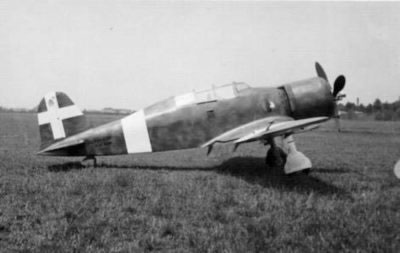
These were used mostly by the Regia Aeronautica Fighter Schools. Smaller numbers were operated as liaison planes or even in some front based fighter units. After the Italian capitulation, small numbers, possible 20 or more, were used by the National Republican Air Force. At least one was given to the Croatian puppet state in the Balkans. The last G.50 B were used by the Flying School in Lecce for a few years after the war, up to 1948.
Historical text and pics from https://plane-encyclopedia.com/ww2/fiat-g-50-freccia/
This model is a different version of the one-seater Fiat G.50, also from Special Hobby, with new parts.
So I check the 1:32 Special Hobby one-seater version instructions and compare with this version,.
We immediately can see that the sprue A are different, with a new fuselage and new cockpit floor and there is an extra sprue, the E sprue.
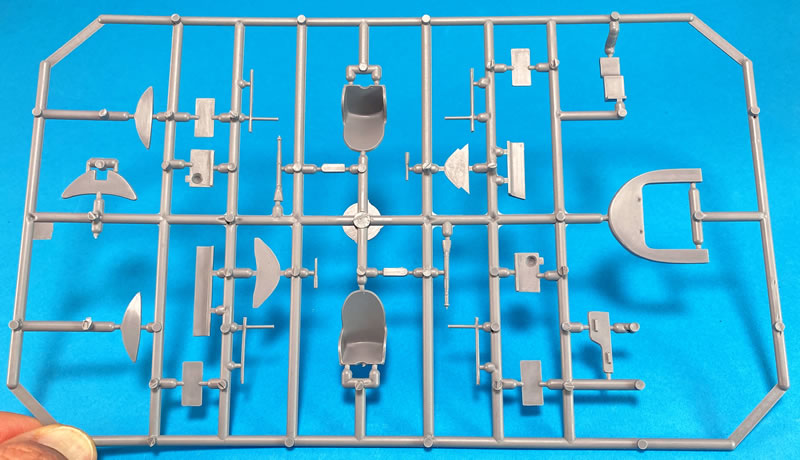
And as obvious, the clear parts are also different.
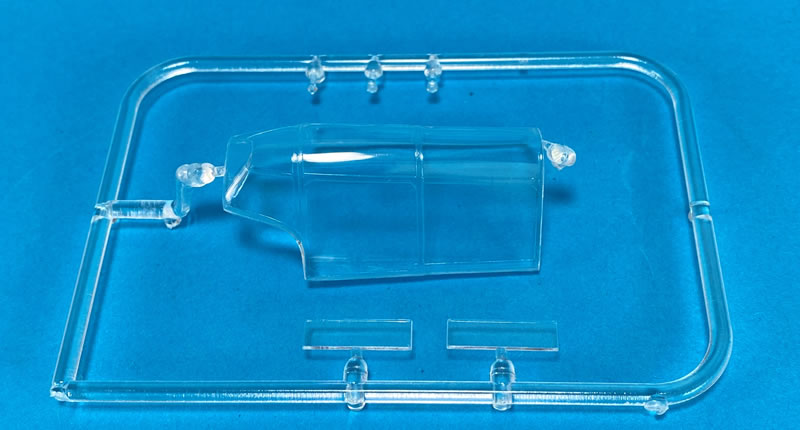
As for the resin and PE parts, all is equal but you get two PE sheets and not just one, as you have two cockpits to make.

So the box is a standard top-opening box in the Special Hobby style, and as I said 5 sprues in plastic grey, a clear sprue, two PE sheets and quite a few resin parts.
Being a limited run kit, there are none of the little luxuries such as locating pins and tabs, so take time when aligning and gluing the plastic parts.
But, as you can see the dry fitting is quite good, even being a limited run model.
There are a few raised ejector pin circles that look like they will interfere with wing parts joining (especially on the inside of tail planes), so you'll need to clean these up prior to assembly. But that`s a quite easy job in fact.
The surface textures on the wings and fuselage are quite good with fine recessed panel lines and very subtle stretched fabric effect on control surfaces, are all well done.

Raised structural detail is moulded onto the inside of the fuselage. The fuselage halves have detail moulded into their interiors, with extra details add by several panel sections on the port side with PE levers, plus a side console on the starboard along with other dials, equipment and an oxygen cylinder.
The cockpit is made up from the floor section, rear bulkhead, two seats, two instrument panel, control columns, and several sidewall instruments made of resin bits.
Moulding of the plastic and mainly the very good detail of the resin parts will pop out with careful painting and weathering.
The instrument panel is a single plastic part with recessed circles and raised switches and two decal sheet with instrument dial.
Passing to the resin parts, they are mainly for the engine and engine cowlings (and several small bits for the cockpit)
The resin is top notch quality as Special Hobby is the home of CMK. The resin are in grey colour has no distortion or bubbles and very good casting and detail in every single one. Very impressive casting.
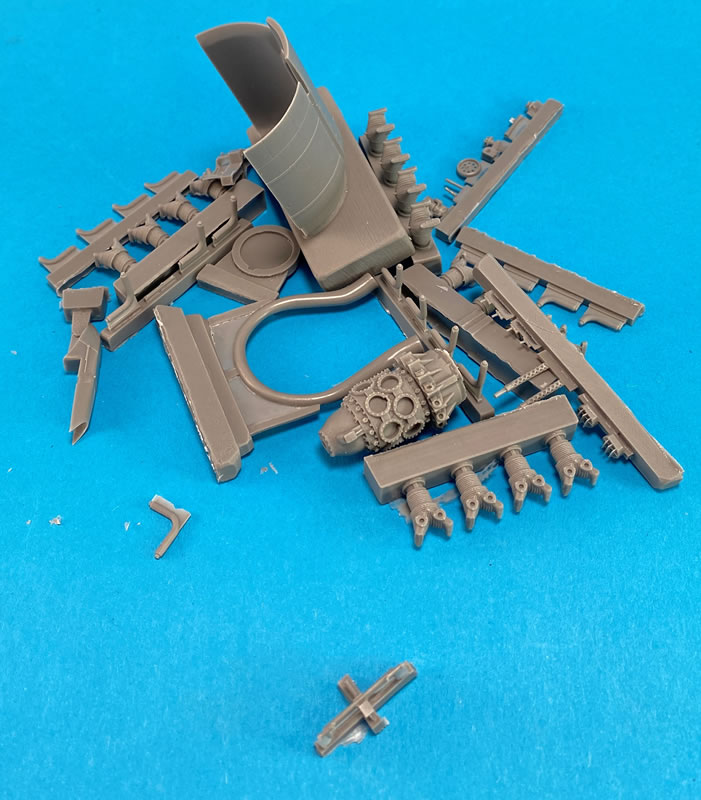
Most of it if for the engine that has a central core, and each cylinder must be add. There are sixteen cylinders in all so patient will be need. Here, as a typical limited run kit, you will need to make push-rods with 0.3mm diameter wire and 8mm long
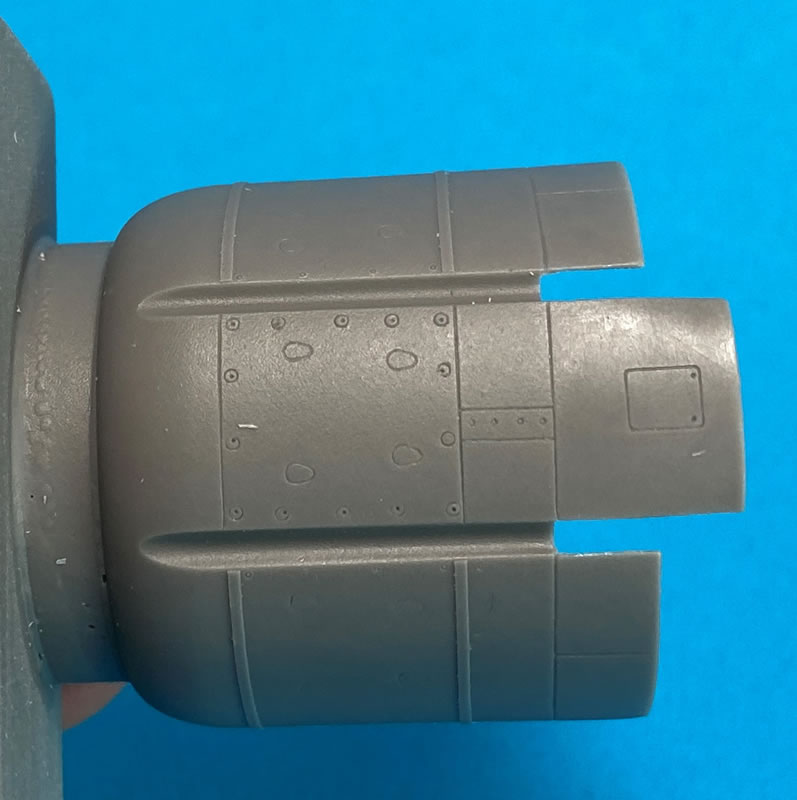
The main wheels. Well each is built from two halves. As always, I will get the resin wheels from CMK.
The PE sheets. As it is a bi-seater, you get two PE sheets identical one with seatbelts for both seats, and some small details for the cockpit like handles and levers.
The clear parts are very well moulded with good frames delimitation and also good clearance and transparency.
Markings
As for the markings, Special Hobby offers four markings options on the decal sheet:
-
Black 136, MM6425, Advanced Flying School, Regia Aeronautica, Italy, 1941
-
No.3510, MM6477, 1 Sqn., 1 Group, Air Base, No.1, Croatian Air Force, Zagreb-Borongaj, Croatia, June 1942
-
B, MM unknown, Luftwaffe, Italian Social Republic, Mid 1943-early 44
-
Black 1, MM6843, 3? Squadriglia, 2° Gruppo Scuola Volo, Aeronautica Militaire, Brindisi, Italy, 1946
The decals look quite good with good definition and colour pigmentation. I don’t know who printed them as its no reference at all of the manufacture so I don’t know how they will work out.
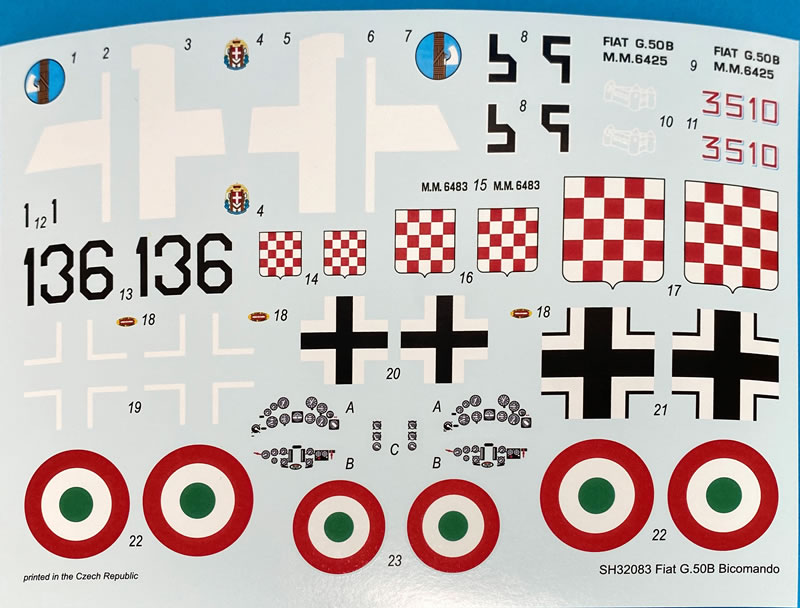
The instruction are a booklet with 13 pages (and two of Special Hobby products), in satin paper, with good drawings and location parts and even with aftermarket suggestion (of their brand) along the way (nice Special Hobby)
This is a limited run kit so its not for beginners but with patience, work and skill a very nice looking model cn be achieved. In fact, having build the early Special Hobby back in the 1990s, this one looks like almost a “Tamigawa” comparing to them.
It`s quite an unusual subjecti in 1:32, but a very welcome one after the single seater and Special Hobby has done a very good job with this one!
Highly Recommended.
Thanks to Special Hobby for the review sample.
Review Text and Images Copyright © 2022 by Francisco Guedes
Page Created 2 February, 2023
Last updated
2 February, 2023
Back to HyperScale Main Page
Back to Reviews Page

|
Home
| What's New |
Features |
Gallery |
Reviews |
Reference |
Forum |
Search